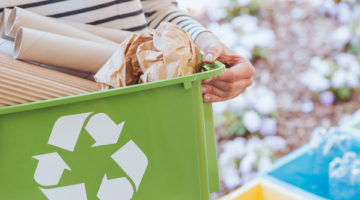
In the UK, water usage is not yet really something people take much notice of. Unlike electricity and gas, which seem to get lots of air time, water bills take a bit of a back seat! The reason for this is that most of us don’t have water meters – so in fact the water companies don’t know how much water we are using – instead they make assumptions about the total amount of water used and so we are charged a flat fee per year.
This assumption, known as the Assessed volume charge is based on the size and type of house, but basically what it means is that you could leave the cold tap on 24 hours a day for 365 days a year and pay no more for your water than your neighbour who never turns the taps on!
Obviously it is easy to spot the issues with this for both the water companies and individuals. For companies they don’t know how much water is used and therefore can’t charge you correctly. For households, you might use less water then has been allocated via the assessed volume charge so you are paying more for water than you need to.
The water companies are really keen to move households on to water meters, because this would allow them to better manage fresh water supply and demand, but for customers too – you pay for what you use!
What this means for the average household though is that there will be much more focus on saving water – far more then there ever has been previously.
How do water meters work?
If you get a water meter installed you are charged a standing charge (which is a daily charge for the pleasure of being able to access water!) and then you pay for each cubic metre of water – or 1000 litres used – which is equivalent to 13 baths, 12 loads of washing, 111 flushes of the toilet or 1759 pints or orange squash.
You are charged approximately 145p to supply each m3 of fresh water and then 85p to remove it as waste water. As a rule of thumb, people in a home with more bedrooms than people are going to pay less for the water bills if they are on a meter and visa versa – the problem is once you have a meter installed it is difficult to go back the other way.
OFWAT (the water company governing body) state ‘if your meter has already been installed, the company will not remove it. But as long as you make contact within 12 months of the meter being installed, the company will give you the option of going back to paying an unmetered charge’. Obviously when you come to move out of the house, the new tenants will automatically be put on the water meter.
So how can you reduce you water usage?
One of the easiest ways is to install a water butt that collects water from the roof via a diverter on your drainpipe. The water is then stored here and can be used as and when it is needed to keep the garden in tiptop shape. You can see a huge range of water butts on TheEcoStore.
The one issue with water butts is that once all the water has been used, you need to wait until it rains for it to refill, however obviously the bigger the water butt the longer it will last and if you have more than one downpipe then you can have multiple water butts located in the garden.

Water Saving Appliances
There are plenty of water sapping appliances in the typical home – washing machines and dishwahers spring to mind. Trying to get water saving appliances when it is time to replace your old appliances is important, but you can also make sure that you are efficiently using your current appliances. Are you putting a full load in the machine? The appliance will use the same amount of water regardless, so make sure it is worthwhile. Some appliances will have economy modes that you can utilise too.
It is also important to make sure you aren’t wasting water from dripping taps. Leaky pipework is responsible for a lot more wastage than you might think, and a dripping tap will really add up over the course of a day.
It’s always worth saving water, whether you are doing it to save money, or to be kinder to the environment. Whether you think a water meter is your best way to help save water, or if you would rather try and cut your usage in other ways, you can make a real dent in your water consumption with just a few easy steps.
Think we missed something? Do you have a different opinion?
Comment below to get your voice heard…












No Comments yet! Be the first one.